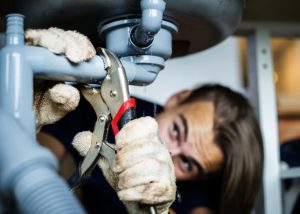Guide To Water Leak Discovery In The House
Guide To Water Leak Discovery In The House
Blog Article
Just how do you feel about Detecting hidden plumbing leaks?

Early detection of dripping water lines can mitigate a possible disaster. Some tiny water leakages may not be visible.
1. Take A Look At the Water Meter
Every home has a water meter. Examining it is a surefire manner in which assists you find leakages. For starters, shut off all the water sources. Guarantee no person will certainly flush, utilize the tap, shower, run the cleaning machine or dishwasher. From there, go to the meter and watch if it will certainly change. Because no person is utilizing it, there should be no motions. If it relocates, that shows a fast-moving leakage. Furthermore, if you discover no changes, wait an hour or two and also examine back again. This implies you might have a slow leak that can even be below ground.
2. Examine Water Consumption
If you detect abrupt modifications, in spite of your usage being the very same, it suggests that you have leakages in your plumbing system. An abrupt spike in your bill indicates a fast-moving leakage.
A stable rise every month, even with the same habits, reveals you have a slow-moving leak that's additionally gradually rising. Call a plumber to thoroughly examine your home, especially if you feel a warm area on your flooring with piping below.
3. Do a Food Coloring Test
30% comes from commodes when it comes to water usage. Test to see if they are running effectively. Decrease flecks of food color in the container as well as wait 10 minutes. There's a leakage between the container as well as dish if the color in some way infiltrates your bowl throughout that time without flushing.
4. Asses Exterior Lines
Do not fail to remember to examine your exterior water lines too. Ought to water leak out of the link, you have a loosened rubber gasket. One little leakage can waste lots of water as well as spike your water expense.
5. Inspect and also Assess the Situation
House owners must make it a behavior to inspect under the sink counters as well as even inside cupboards for any bad odor or mold development. These 2 warnings show a leakage so timely interest is needed. Doing regular assessments, also bi-annually, can save you from a major problem.
Examine for discolorations and damaging as many pipelines as well as appliances have a life expectancy. If you presume dripping water lines in your plumbing system, don't wait for it to intensify.
Early discovery of leaking water lines can minimize a prospective calamity. Some small water leakages may not be noticeable. Examining it is a guaranteed means that helps you uncover leakages. One tiny leak can throw away lots of water and also spike your water expense.
If you suspect leaking water lines in your plumbing system, do not wait for it to rise.
WARNING SIGNS OF WATER LEAKAGE BEHIND THE WALL
PERSISTENT MUSTY ODORS
As water slowly drips from a leaky pipe inside the wall, flooring and sheetrock stay damp and develop an odor similar to wet cardboard. It generates a musty smell that can help you find hidden leaks.
MOLD IN UNUSUAL AREAS
Mold usually grows in wet areas like kitchens, baths and laundry rooms. If you spot the stuff on walls or baseboards in other rooms of the house, it’s a good indicator of undetected water leaks.
STAINS THAT GROW
When mold thrives around a leaky pipe, it sometimes takes hold on the inside surface of the affected wall. A growing stain on otherwise clean sheetrock is often your sign of a hidden plumbing problem.
PEELING OR BUBBLING WALLPAPER / PAINT
This clue is easy to miss in rooms that don’t get much use. When you see wallpaper separating along seams or paint bubbling or flaking off the wall, blame sheetrock that stays wet because of an undetected leak.
BUCKLED CEILINGS AND STAINED FLOORS
If ceilings or floors in bathrooms, kitchens or laundry areas develop structural problems, don’t rule out constant damp inside the walls. Wet sheetrock can affect adjacent framing, flooring and ceilings.
https://www.servicemasterbyzaba.com/blog/how-to-detect-water-leakage-in-walls/

I came across that piece about Hacks to detect leaks while doing a search on the internet. You should take the opportunity to distribute this content if you enjoyed reading it. Thank you for taking the time to read it.
Report this page